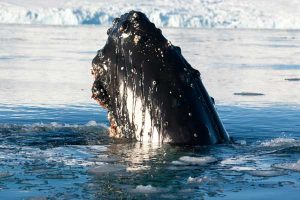New manual puts a name to a fin
By Lookout on Jul 15, 2013 with Comments 0
The waters that make up the workplace of the Royal Canadian Navy (RCN) are home to countless forms of marine life.
Throughout the day, any number of these seafaring critters may be observed by ship’s staff, and it’s a sailor’s duty to take notice.
Through a voluntary program run by the Vancouver Aquarium, the Department of Fisheries and Oceans (DFO) receives marine mammal and reptile sightings data from a variety of sources, including lighthouse keepers, tugboat captains, B.C. Ferries, recreational boaters and private researchers. MARPAC vessels and staff are also an integral part of the sightings network, and ships’ staff record and report all sightings and interactions with marine mammals, with location, bearing, species, number of individuals, and whether or not any young are present.
“It’s important to the DFO and to organizations like the navy that we know where and when these animals are sighted,” says Danielle Smith, an Environment Officer with Formation Safety and Environment. “Some ocean areas see very little vessel traffic, especially in the winter season, and the data provided by the navy may be the only observations available. Some of the records provided by ships’ staff are of endangered or threatened species; these data points are extremely important to the DFO when making conservation and management decisions.”
With the staggering variety of marine life, it can sometimes be difficult to accurately record the type of marine mammal encountered, especially to someone unfamiliar with the many types of marine life in Canada’s waters.
“Some of these species vary from one another in very subtle ways,” says Smith. “The difference between a Grey whale and a Humpback, two species people often confuse, can be recognized by the presence or absence of a dorsal fin, and the length of pectoral fins. The average sailor might not know that.”
To help educate sailors and aid in report taking, the Environment Office is creating the Marine Mammal Identification Guide.
The guide provides a simple and easy to read layout of marine mammals most commonly encountered in the Pacific Ocean. Along with full body diagrams and distinguishing traits, the guide provides photos of the animals just cresting the water; the way sailors are most likely to see them.
“Animals rarely will be seen fully out of the water, unless they’re breaching,” says Smith. “With this type of information sailors will know what to look for, even if it’s just the animal’s back and tail.”
The guide was created in conjunction with the Cetus Research and Conservation Society, who helped gather and organize information on the various marine mammal species.
“Cetus has been hugely helpful and supportive,” says Smith. “Without them we couldn’t have gotten this guide done at all.”
That being said, the guide is only half done. Diagrams and photos constitute only half of the information Smith and Formation Environment want to present.
The other side of the guide will include information on how to report observations of entangled marine mammals or reptiles, distance and approach guidelines, and how to effectively go about the recording process.
“The identification and reporting of marine mammals is secondary to our training and operations. The only way to run the program successfully is to make identification and reporting as straightforward as possible,” says Smith.
Smith and Formation Environment offer marine mammal identification training to ships, sailors, and command. The guide will support and supplement this training with the goal of improving ease and accuracy of identification.
Training is available through Smith and only takes about an hour.
“I go through the common types of marine mammals, how to tell them a part, and what to do when you see them,” she says. “The whole thing can be done in a ship’s mess, so it is super convenient.”
For those seeking more information on the Marine Mammal Identification Guide, or interested in marine mammal identification training, contact Smith at 250-363-2313.
-Shawn O’Hara, Staff Writer
Filed Under: Top Stories
About the Author:






